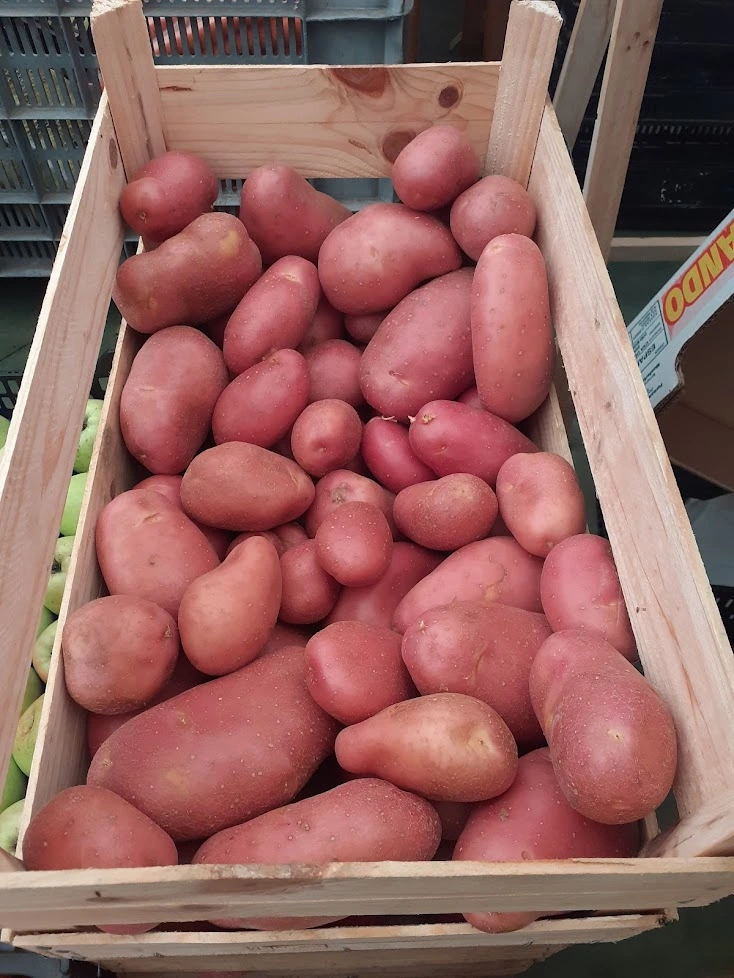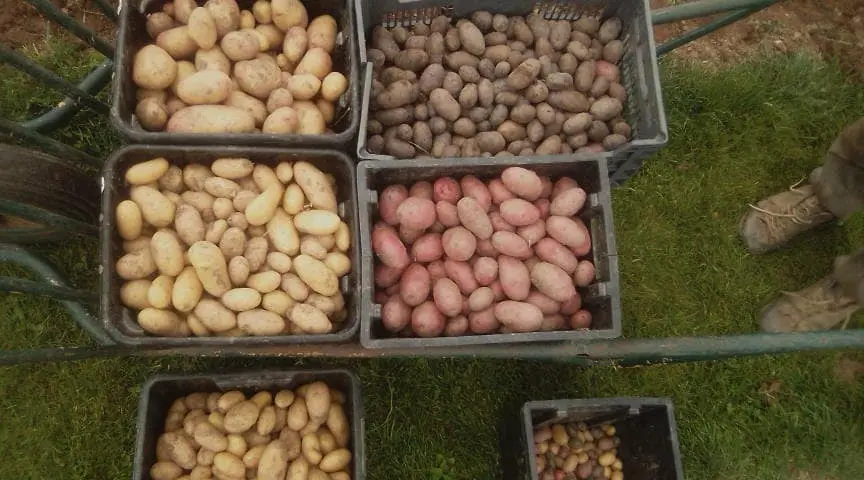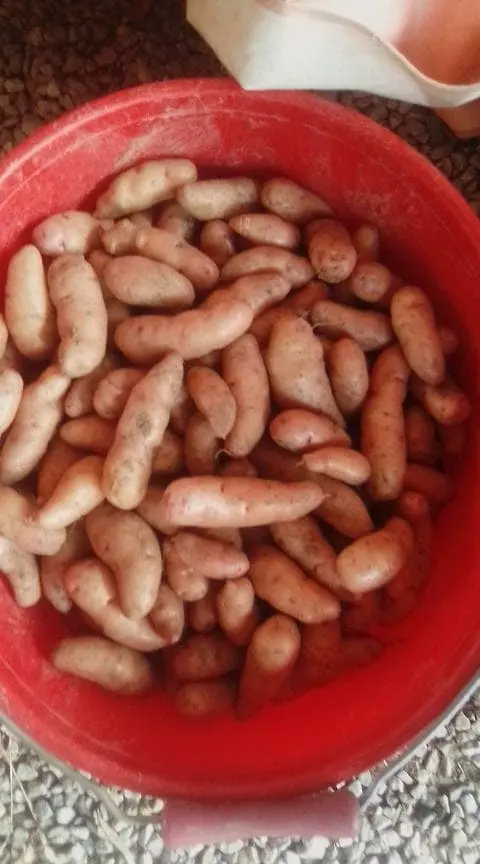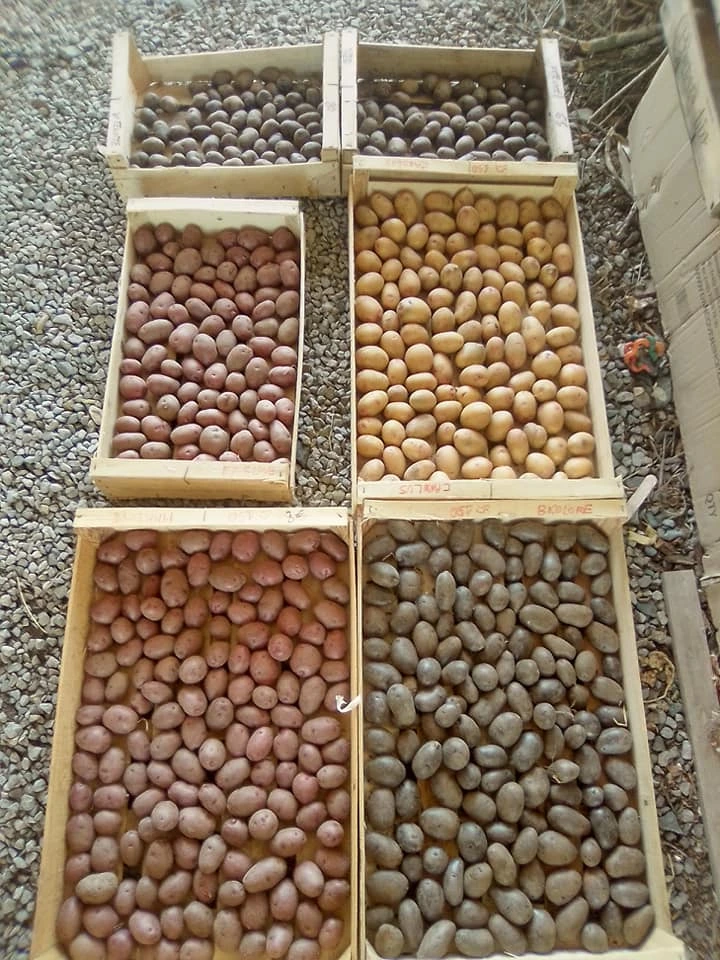This post contains affiliate links. When you buy through our links, we may earn a commission.
When you think of small red potatoes, what comes to mind? Perhaps you think of a healthy side dish that is easy to prepare.
Or, maybe you think of those festive little potatoes often served during the holidays. Whatever the case, you probably don’t think about whether or not they are dyed.
But, the fact is, many small red potatoes are dyed. According to a study done by the U.S. Food and Drug Administration, nearly half of all small red potatoes tested were found to have been dyed.

So, are red potatoes dyed?
Red potatoes are typically red, but some may wonder if this color is natural or if the potatoes are dyed. It is pretty common for red potatoes to be dyed.
The natural color of red potatoes can fade over time. Especially true when the potatoes are exposed to sunlight. To keep the potatoes looking fresh and vibrant, farmers will often dye them.
So, if you see a red potato that looks too good to be true, it probably is! But don’t worry, these potatoes are still safe to eat.
Why Would Growers Dyed Red Potatoes?
Growers are finding that shoppers are more likely to purchase red potatoes that have been dyed, even though the skin might not be red enough to be visually appealing in the produce aisle.
The growers say that shoppers associate the color red with freshness, and they are more likely to purchase potatoes that have been dyed red.
Some growers have even started growing potatoes that are specifically bred to be red.
How Do Red Potatoes Get Their Color?
It’s no secret that red potatoes get their color from the anthocyanin pigments present in the tuber periderm and peripheral cortex. But how does this happen?
When a potato is exposed to light, these pigments become activated and produce the red or purple color we see on the potato’s skin. This process is known as photochemical synthesis.
So next time you’re wondering how those beautiful red potatoes got their color, remember it’s all thanks to the power of anthocyanin pigments.

Also, when it comes to Dyed Red Potatoes, many people are concerned about the potential for the artificial dye to affect the taste or texture of their citrus.
However, when purchasing red potatoes, there is no need to worry about this potential issue. The potato peel does not come into contact with the citrus, so the artificial dye will not affect the taste or texture of your citrus.
Potatoes aren’t the only items in the produce section that are artificially colored.
There are a few other fruits and veggies that have been known to be dyed red.
- One of the most common fruits that are dyed red is apples. Because apples naturally have a greenish tint, dyers add a red dye to make them look more appealing to consumers.
- Another fruit that is sometimes dyed red is pears. Pears typically have a yellowish color, but dyers will add a red dye to give them a more vibrant hue.
- In addition to fruits, some vegetables are commonly dyed red. One of the most popular vegetables that are dyed red is carrots. Also, carrots naturally have an orange color, which many people find unappealing.
How Are Red Potatoes Grown
Red potatoes are one of the most popular potatoes in the United States. They are versatile vegetables used in various dishes, from roasted red potatoes to mashed potatoes. But how are they grown?
When growing red potatoes, you need to consider where you live. Since potatoes are a mid-season variety, it’s best to plant them about six to eight weeks before your area’s last average frost date.
Northern regions generally have a later last frost date than southern regions.

It means that if you live in the south, you can plant your potatoes a little earlier than in the north.
Some other things to consider when choosing when to plant red potatoes are the length of the growing season and the type of soil you have. If you have a shorter growing season, you may want to start your potatoes indoors and transplant them outside later.
And if you have sandy soil, which drains quickly, you may want to wait until closer to the last average frost date so that your potatoes don’t dry out.
Are Red Potatoes Healthy?
In general, potatoes are a healthy food. They are a good source of vitamins, minerals, and fiber. However, some people believe red potatoes are more nutritious than other potatoes. There is some evidence to support this claim.
Red potatoes contain more antioxidants than other types of potatoes. Antioxidants are essential for protecting the body against damage from free radicals. Free radicals are molecules that can cause disease and premature aging.
Can You Avoid Dyed Potatoes?
There are a few ways to avoid the dye when it comes to artificially dyed fruit. One way is to buy organic potatoes. Organic potatoes are not treated with synthetic pesticides or herbicides, and they are not dyed.

Another way to avoid dyed potatoes is to look for the Non-GMO Project Verified label.
An independent third party verified the product as being free of genetically modified ingredients.
FAQ – Frequently Asked Questions
Are Red-Skinned Potatoes Natural?
Some people might be wondering if red-skinned potatoes are natural. The answer is yes, they are! Red-skinned potatoes are just another type of potato you can find in nature. They’re not genetically modified or anything like that. So, if you’re looking for a raw potato option, red-skinned potatoes are a great choice.
Which Potato Is Healthier, Red or White?
Red potatoes contain more antioxidants than white potatoes, which can help fight diseases and keep your body healthy. So next time you’re at the grocery store, reach for the red potatoes instead of the white ones!
Growing Red Potatoes – Video
Conclusion
In conclusion, the color of a potato is determined by its variety, and red potatoes get their color from anthocyanin pigment. In contrast, some farmers may paint their potatoes to make them look more appealing.
But if you want to avoid dyed potatoes, check the Non-GMO Project Verified label of the potatoes before purchasing.
